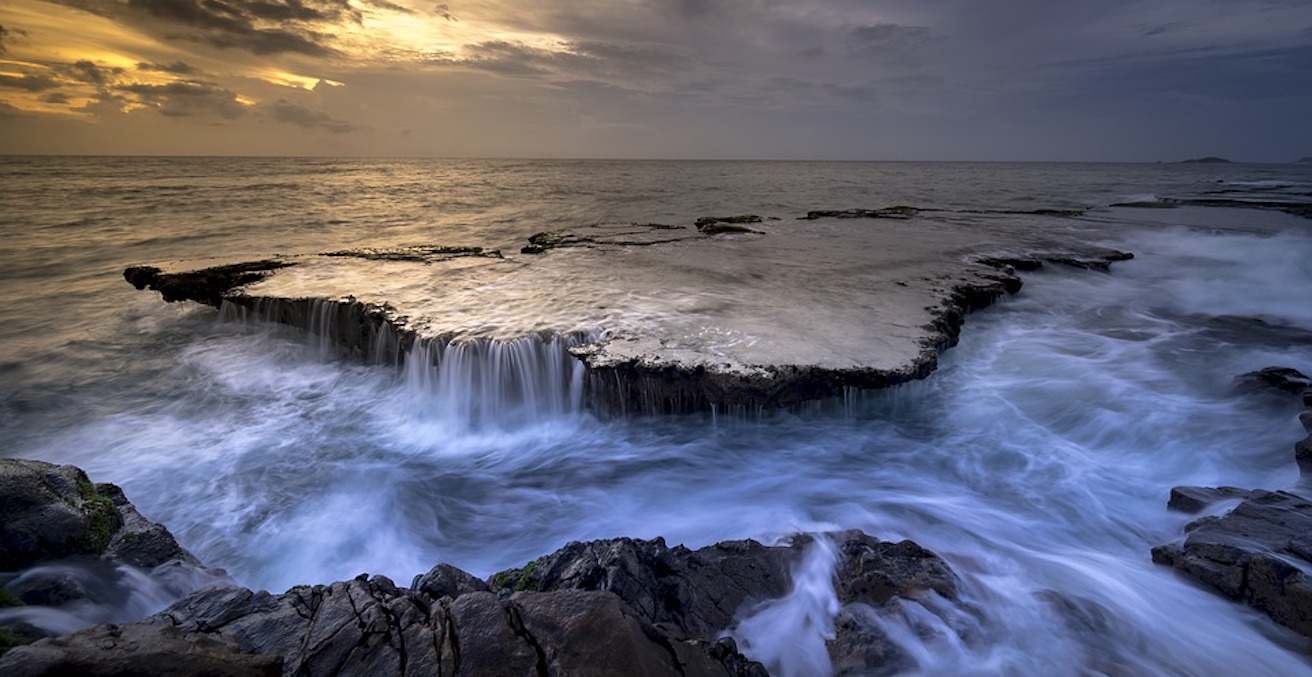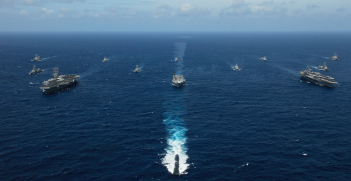Oceans of Opportunity and Challenge

Governments met in New York this week in an important step towards filling the gap in governance of the high seas. Negotiating an agreement will be the first step towards protecting the biodiversity of nearly half the planet.
Marine areas beyond national jurisdiction cover approximately 40 per cent of the earth’s surface, 64 per cent of the ocean surface and 95 per cent of its volume. Technically, these are the areas of the high seas water column seawards of the outer limit of coastal states’ exclusive economic zones and all those areas of the seabed beyond the edge of coastal states’ continental margins.
As global shipping intensifies and technological advances provide more opportunities to access the living and non-living resources of the high seas and the deep seabed beyond national jurisdiction, the catalogue of threats to the marine environment and its biodiversity will also increase.
Seaborne trade and passenger traffic are rapidly expanding and are expected to double over the next two decades. The risks to marine biodiversity from intentional and accidental vessel-source discharges—including oil and other hazardous substances, noise and ship strikes on marine mammals—are likely to be compounded with more high-seas traffic. The deep sea fishing industry is now supported by a battery of technological innovations including global positioning systems, multi-beam sonar and stronger and more powerful cables and winches. Fishing nets and lines are composed of virtually indestructible synthetic material and may be laid over vast areas of ocean. Heavy bottom-trawling gear has already caused substantial damage to vulnerable marine ecosystems.
There are also new and emerging uses of the marine areas outside national jurisdiction, such as more intrusive marine scientific research, bioprospecting, deep seabed mining and environmental modification activities to mitigate the effects of climate change, that also have the potential to harm the highly interconnected and sensitive ecosystems of the open ocean and the deep seabed, if not sustainably managed now and into the future.
Towards stronger governance
The 1982 United Nations Convention on the Law of the Sea established an expansive framework for protection and preservation of the marine environment, which was designed to cover all areas of ocean space. In practice, cooperation among states to develop international rules and standards to protect the marine environment is still a work in progress and there are many governance, regulatory and implementation gaps in the international framework.
These gaps are especially evident in the fragmentary system of ocean governance applicable to areas outside national jurisdiction. For this reason, the UN General Assembly initiated a process in 2015 through UN General Assembly Resolution 69/292 to develop the elements of an international legally binding treaty for conservation and sustainable use of marine biodiversity in these areas.
UN resolution
UN General Assembly Resolution 69/292 specifies that negotiations to develop the new treaty should address the four elements of a package deal agreed by states in 2011. These elements comprise marine genetic resources including questions on the sharing of benefits; measures such as area-based management tools, including marine protected areas; environmental impact assessments and capacity building; and the transfer of marine technology. The resolution also stipulates that the process to develop the treaty should not undermine existing relevant legal instruments and frameworks and relevant global, sectoral and regional bodies.
Preparatory committee meetings in 2016 and 2017 identified additional cross-cutting issues for consideration including definitions and scope. Although they didn’t reach a consensus on a draft treaty text, these meetings performed the valuable function of clarifying the parameters and details of the negotiations ahead of the intergovernmental conference phase.
A majority of states have demonstrated positive political will and momentum to conclude the new agreement. On 24 December there was overwhelming support for UN Resolution 72/249 convening an intergovernmental conference to negotiate the treaty. As part of that, an organisational meeting for the intergovernmental conference has taken place in New York this week. It will be followed by the first session of the intergovernmental conference (4-17 September 2018) with three further sessions planned over 2019-2020. The new agreement resonates with a variety of contemporary global issues and initiatives affecting the oceans including climate change and the UN’s 2015 Sustainable Development Goals.
The international scientific community, NGOs and intergovernmental organisations such as the International Union for Conservation of Nature continue to play a very supportive role in the negotiation process towards the treaty and provide ongoing analysis of issues to support states participating in the negotiations.
This is a historic opportunity to lay the foundations for a more integrated system of oceans governance. Given the growing threats and pressures on the marine environment outside national jurisdiction, this is critical to ensuring the long-term survival of marine biodiversity.
Dr Robin Warner is a professor at the Australian National Centre for Ocean Resources and Security at the University of Wollongong. She was formerly the assistant secretary of the International Crime Branch of the Criminal Justice Division in the Commonwealth Attorney General’s Department.
This article is published under a Creative Commons Licence and may be republished with attribution.





